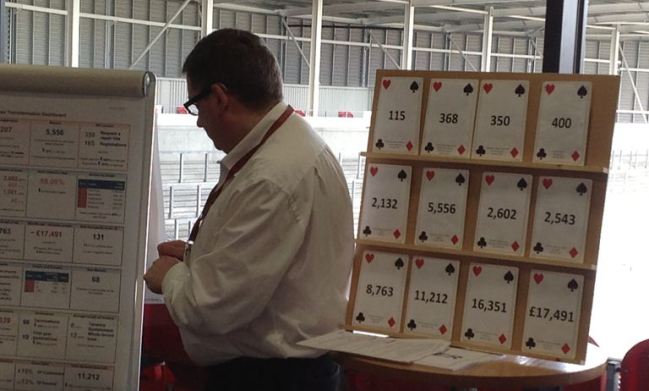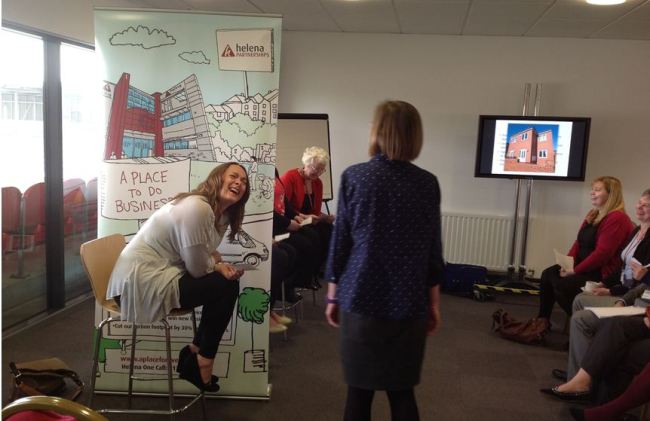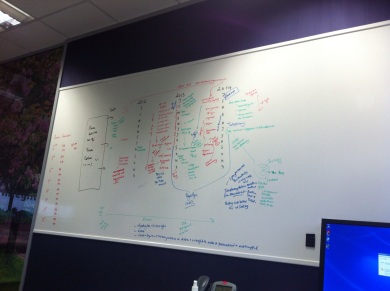Today’s post comes from Janelle Hardacre, PR and Media Officer at Helena Partnerships…
Having come from an agency background, I have been lucky enough to deliver comms for a huge array of different organisations and brands, from NHS Trusts to ice lollies. However, I was a complete ‘newbie’ to the housing sector when I joined the Helena communications team last year.
Judging from the various 2013 round ups from the housing press, it’s clear that I joined during one of the most challenging years the social housing sector has ever experienced.
This has been a huge eye opener, particularly from a comms perspective, and it’s been really interesting to watch how housing associations, including Helena, have approached the challenges of getting communications right in the midst of huge changes like welfare reform.
I’ve already learnt so much from my Helena colleagues and other housing communicators in 2013. Here I explore what I feel are some of the key considerations, learnings and innovative approaches coming from the sector to answer the challenges of communicating benefit changes to such diverse communities.

Customer Insight
As communicators, it’s vital that we understand as much about our audiences as possible. By analysing customer insight into demographics and motivations, communications can be tailored to ensure that messages are targeted, and reach tenants in a format which appeals to and will resonate with them.
I’d argue that the housing sector needs to start working more like the private sector, using data to develop a strong understanding of what our organisations’ brands means to customers and how customers interact with us.
Multi-channel approach
We know that there isn’t a ‘one size fits all’ answer for how we communicate with tenants, and as a sector it is important that we are flexible with our approaches and continue to share best practice to ensure tenants are receiving the most appropriate advice and support.
Now more than ever, we need to consider how to maximise income and minimise cost at the same time as providing effective communications. Every channel has its place in the communications mix, so it’s important to develop a tailored strategy for each tactic, with tangible KPIs in place.
Personalisation
One of the barriers to communicating with tenants can often be making sure communications cuts through the noise of adverts, junk mail and sales calls, and that they really gain an understanding of how changes to the benefits system will affect them personally in pounds and pence, rather than how it affects society in general.
We have found that something as simple as addressing a person by name and communicating exactly how they are affected by the changes in a tailored mailer can have a noticeable impact on the number of people engaging with the organisation.
Embracing digital
There is often an assumption that social housing tenants lack access to computers and therefore the internet. Our digital insight indicates that there is a strong appetite among customers for digital services and in a survey of one of our most deprived estates, 77% said they had access to the internet at home.
It’s important that information and advice about welfare reform is easily accessible online. Video has also been successfully utilised by several housing associations, to explain changes in an engaging and digestible format, often attracting thousands of views.
What more can we do?
Working in one of the most challenging operating environments in recent memory, it’s ultimately the job of social landlords to make it as easy as possible for all tenants to interact with them and for those affected by welfare reform to feel they can get in touch.
Inquisitive as my colleagues are, they have asked me whether I would have approached welfare reform comms differently had this been a brief that had come into my previous agency. I’d like to think that a lot of what we’d recommend would be similar to the effective work which has been done to date.
Building on this, I’d look to try and harness the power of word of mouth. In marketing, nothing is more influential than a recommendation from a trusted friend or family member, so it is important that we are creating content that is not only informative, but that people are compelled to share. As the saying goes, ‘content is king!’
I’d also say, as communicators we should never stop looking outside the housing sector at current trends for ideas and inspiration.
We’d love to hear your thoughts and feedback. Leave a comment or tweet us @helenapartnersh
 Housing Day – such a simple concept and something that last year and this has blown me away. Last year an inspired idea by Ade Capon spurred thousands of people into action who were united in one goal – bring housing alive by telling the real life stories that often go unnoticed. Housing Day has become a movement in its own right and its amazing to see it being spoken about every day, not just on one day in the year.
Housing Day – such a simple concept and something that last year and this has blown me away. Last year an inspired idea by Ade Capon spurred thousands of people into action who were united in one goal – bring housing alive by telling the real life stories that often go unnoticed. Housing Day has become a movement in its own right and its amazing to see it being spoken about every day, not just on one day in the year.





